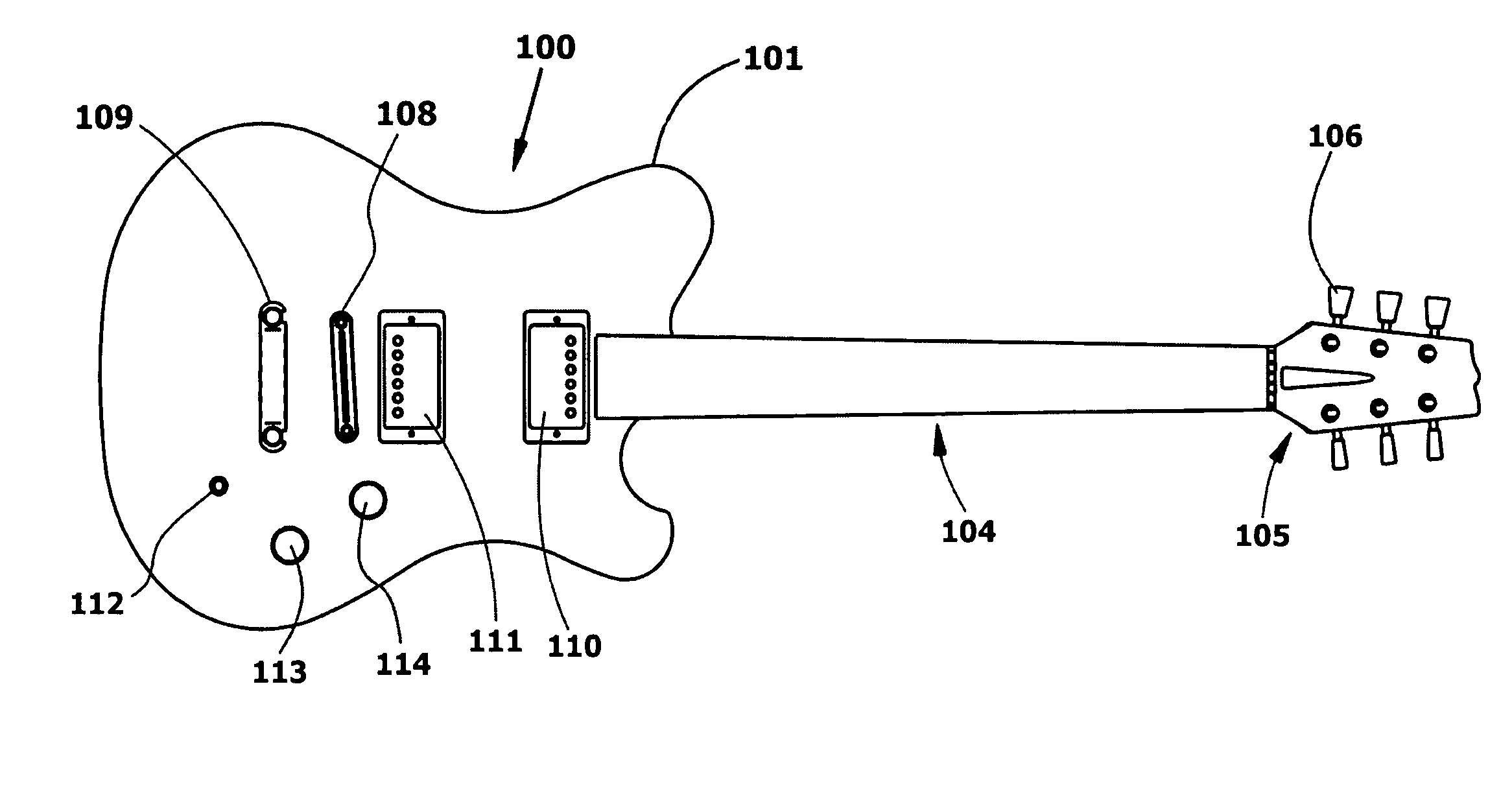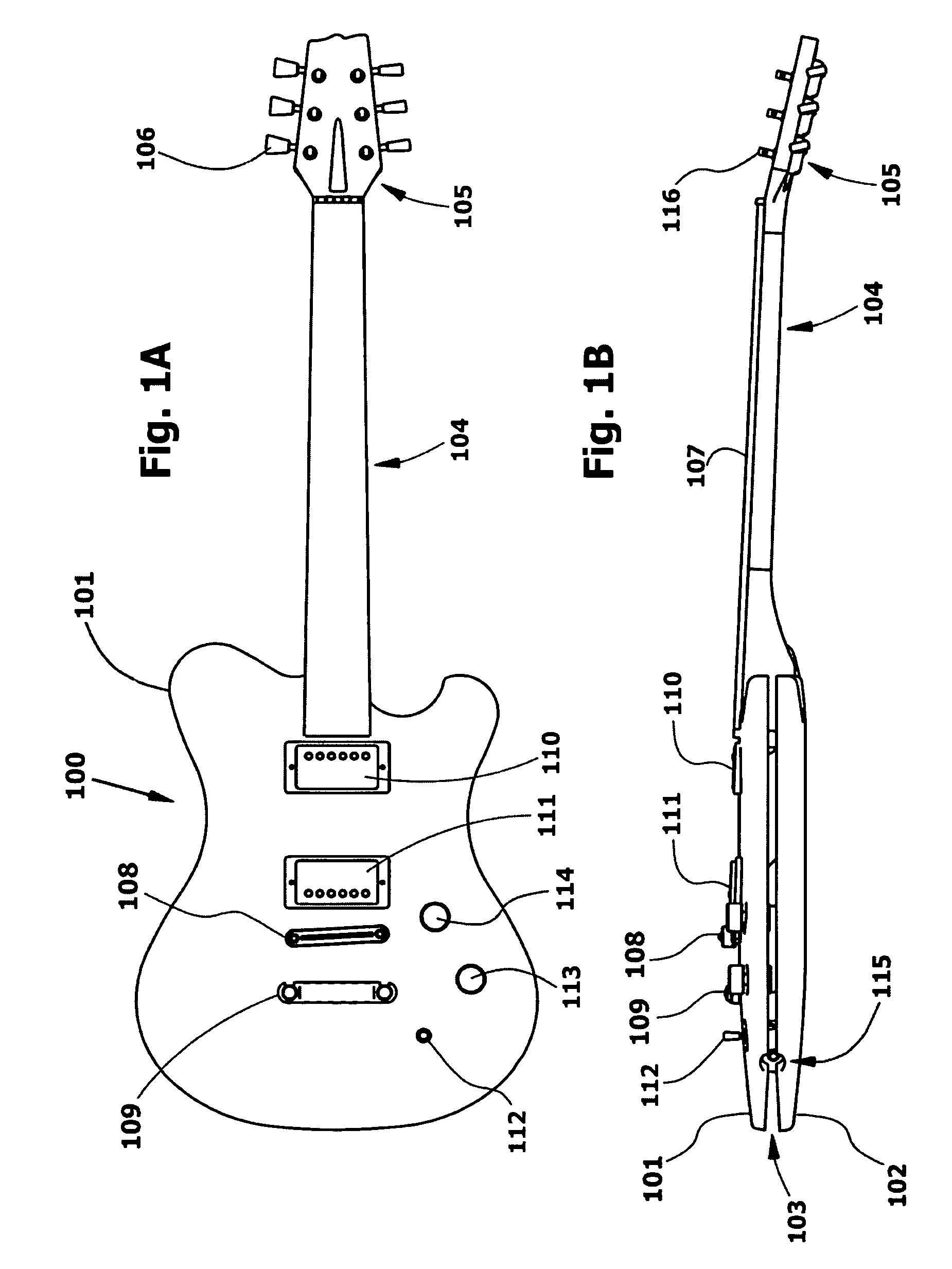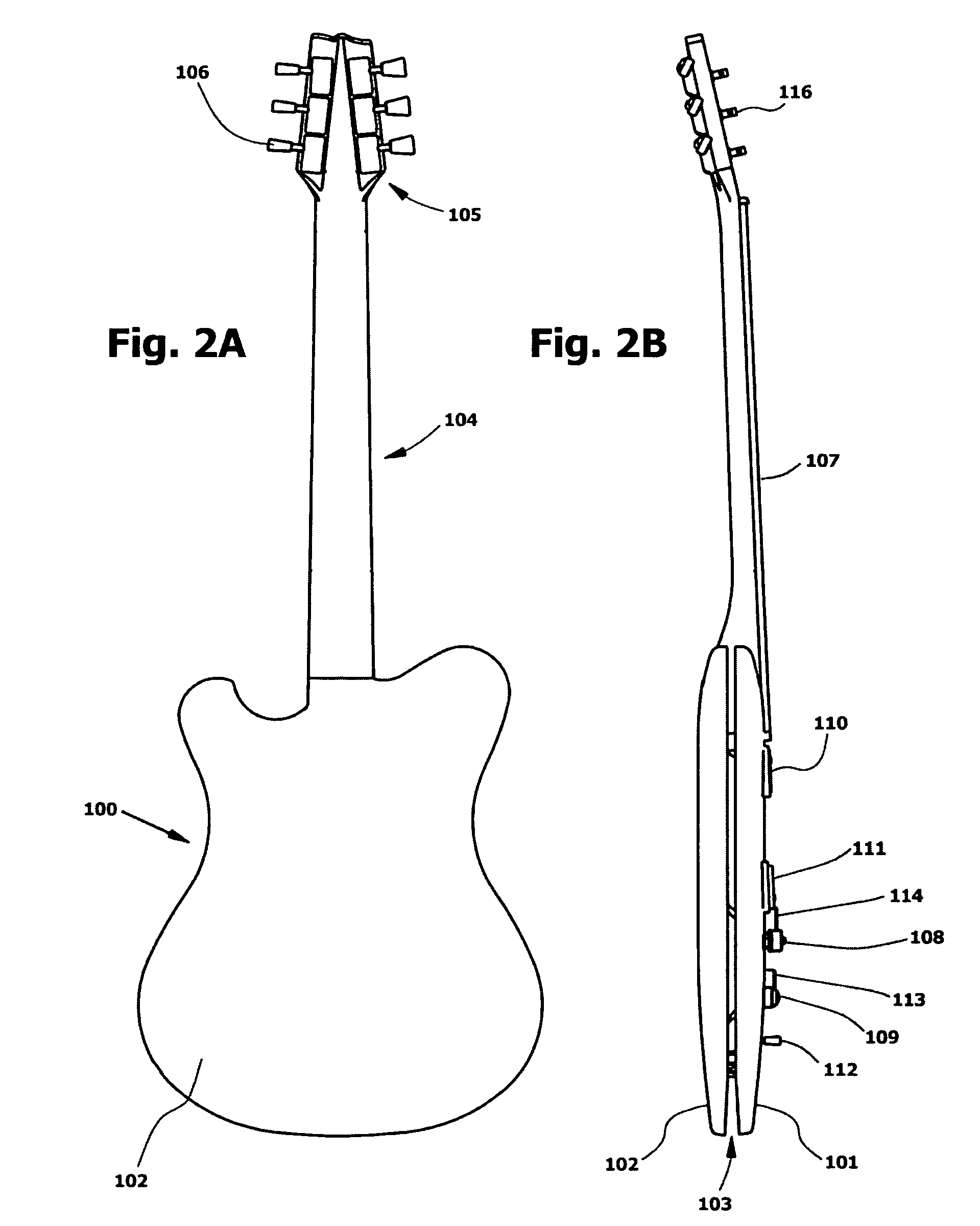[0028]
Solid body design thus can both promote and subdue the development of
harmonic overtones. String fundamentals and
harmonics are sustained in a
solid body guitar because the energy of the string is not quickly dissipated by exciting
modal responses in the guitar body. In a stiff body, the
harmonics on the string, which are picked up by electromagnetic pickups, are enhanced and sustained. Stiffness along the axis of the neck, bridge and tailpiece, will enhance sustain. Lateral elements that can resonate are a source of color in an instrument. Using these observations, the design of electric
solid body guitars is herein improved—I have invented a
solid body electric guitar or bass in which the sustain and the mellow character of the
resultant amplified tone is surprisingly enriched. The body can also be lightened.
[0031]Put another way, the front and back body plates are separated by an open channel that “cuts” into the guitar body from its outside edge. As a negative space, the depth of this channel defines the outline of the solid “core”. While the plates can be construed as “shelves” or “fins” mounted on a vertical element, a better analogy might be as follows: in the manner of a stiff three-dimensional
tuning fork having leaf-like tongs joined at a rigid junction, the plates can both resonate and dissipate
sound energy, thus producing a unique, signature sound with rich, pleasing, color, sustain and mellowness. Extending the analogy, the tongs (here “leaves”) of the
tuning fork can oscillate in the manner of a
transverse wave, but the center core cannot. Importantly, the
solid core of the guitar is held essentially rigid with respect to the
long axis of the neck, enhancing the sustain of the string vibration. The body is also lighter and may weigh less than 5 pounds, more preferably less than 3.5 pounds.
[0036]While not bound by theory, the free radial projections of the front and back body plates of the present invention are resonant members. Points at the outside edge of the radial projections function acoustically as antinodes. Acoustic
modal analysis could suggest multiple vibrational
modes; a unique deformational figure characterized by a relatively
high frequency widening and narrowing of the interplate channel as the plates oscillate, expanding and compressing the air in the channel, and a slower (longer) deformational figure characterized by a wave or
waves moving along the free edges at the perimeter of the plates. However, because the radial distance R varies continuously around the perimeter of the guitar body, a complex range of resonant frequencies are produced rather than a sharp maximum, no matter the exciting frequency of the strings. These layered resonances serve to dissipate the
sound energy of the strings and hence modify the tonal quality amplified by an electromagnetic
pickup, or for that matter, other types of pickups as well, producing a signature sound that can be further modified by acoustic chambers dished out from the plates within the interplate channel.
[0038]Furthermore, the
electric guitar or bass body design and construction described in the present invention allows the craftsman to build a solid body guitar with a larger body without adding significant weight to the guitar.
Body weight and the density of the materials used are factors, among others, that determine the tonal signature of the guitar. For example, a light body (or a less dense wood) can be more responsive and vibrant, whereas a heavy body (or a more dense wood) can provide a longer sustain. Conventionally, large guitar bodies deliver a full tone, whereas small bodies can sound tiny and thin. Also, if a heavy (more dense wood) is used then the
body size preferably would normally be kept small, because guitar players can't carry a heavy instrument for too long. The design presented herein overcomes this limitation, allowing the guitar builder to use more
dense body woods (for enhanced sustain) in combination with a larger
body size for fuller tone, without the weight penalty.
[0040]In another embodiment, the
electric guitar or bass body design and construction described in the present invention allows the craftsman to tune or modify the tonal properties of the instrument during manufacturing by
carving or hollowing acoustic chambers out of the lower or front body surfaces forming the internal channel, or both, thus individually altering the acoustic
mass of the body members as desired. Synergically, these internally dimensioned acoustic chambers permit discrete placement of the electrical systems of the guitar, enhancing both the aesthetics and manufacturability of the guitar.
 Login to View More
Login to View More  Login to View More
Login to View More 


